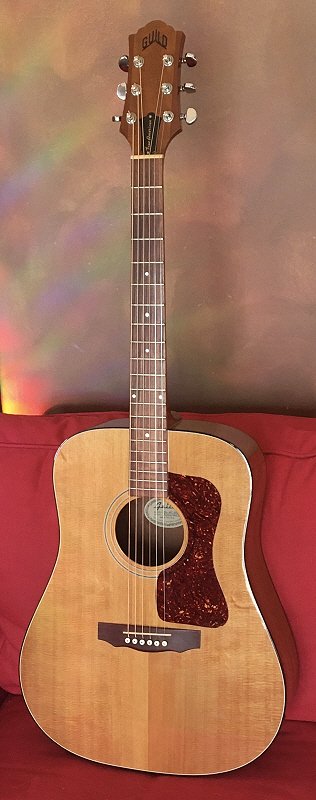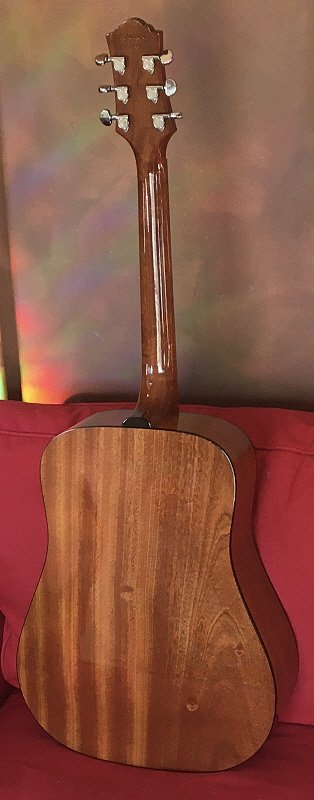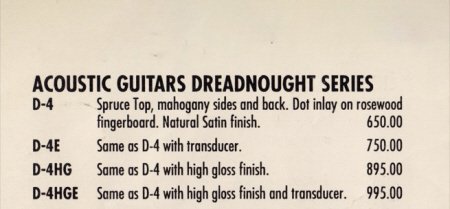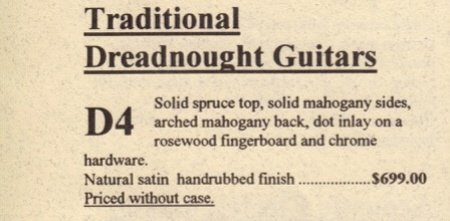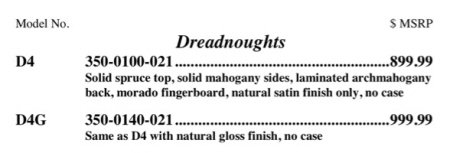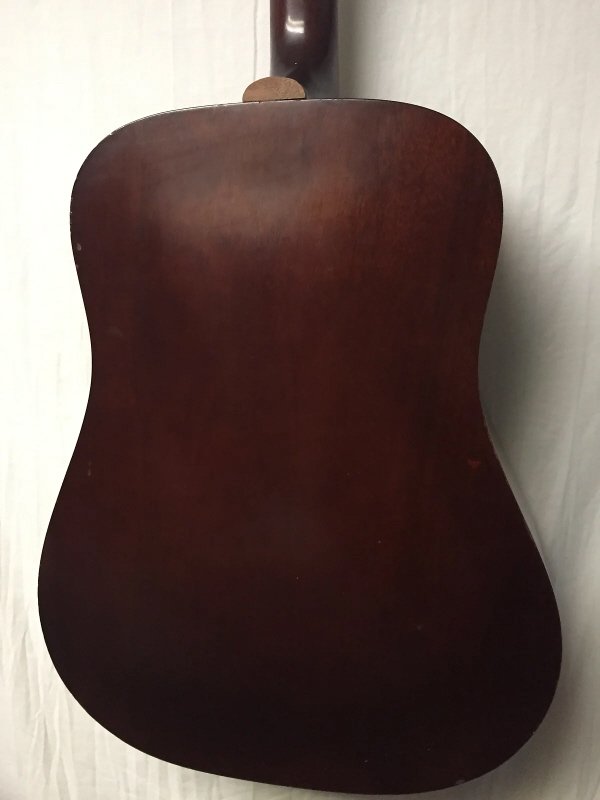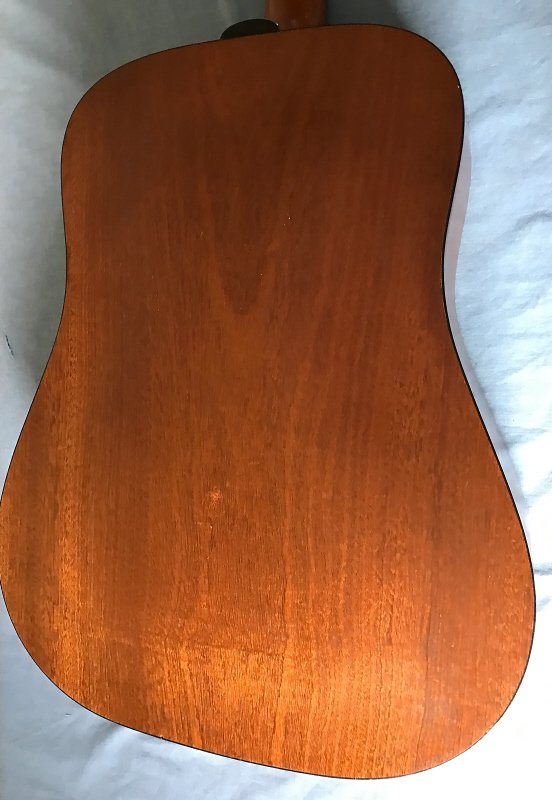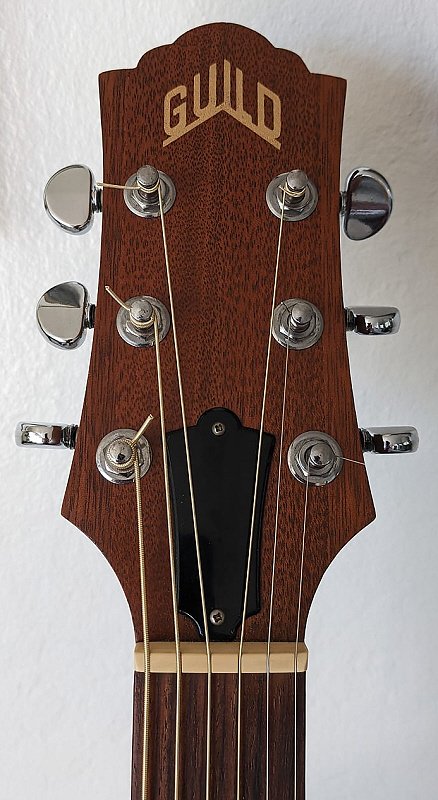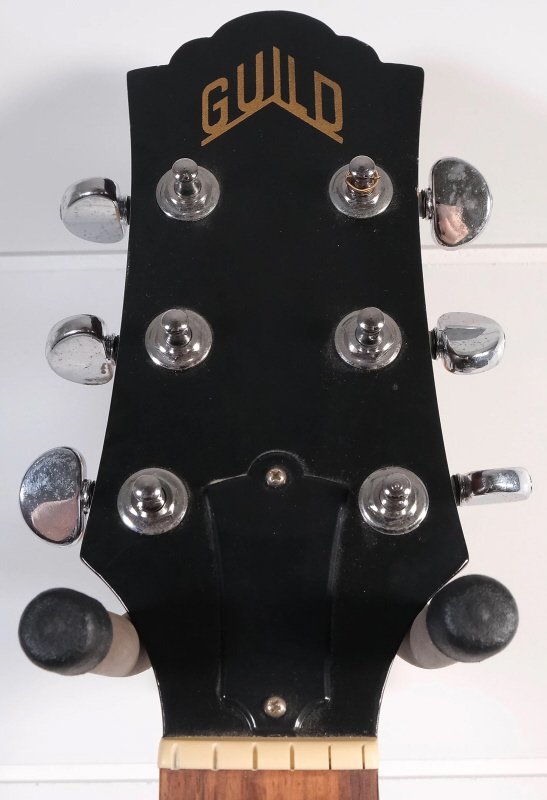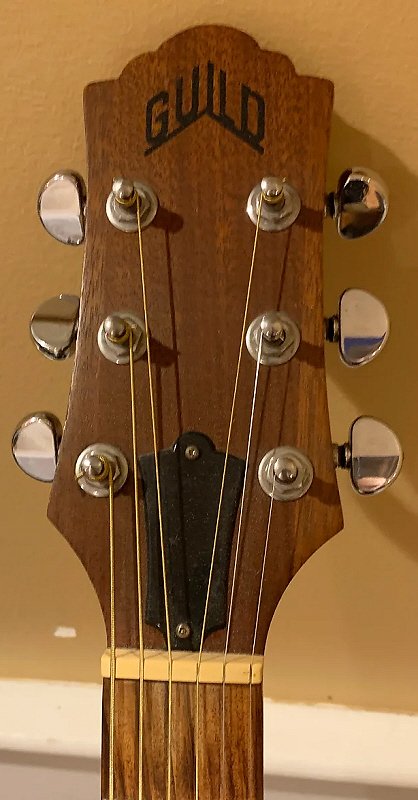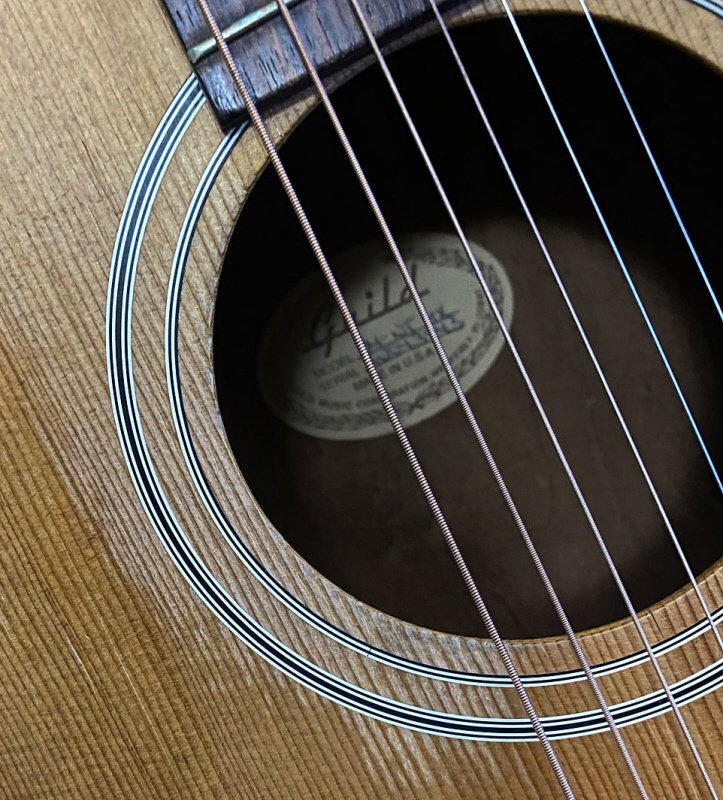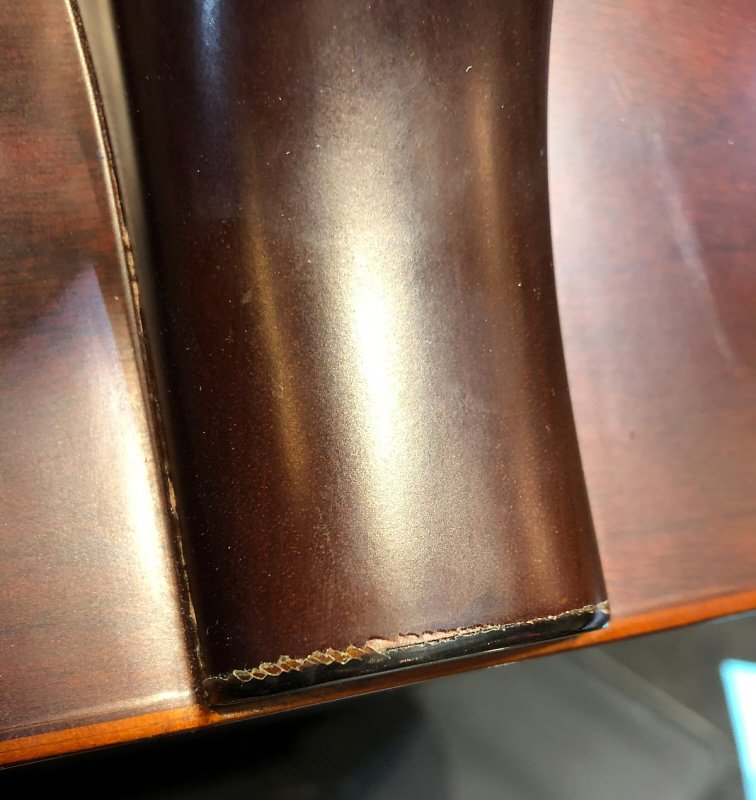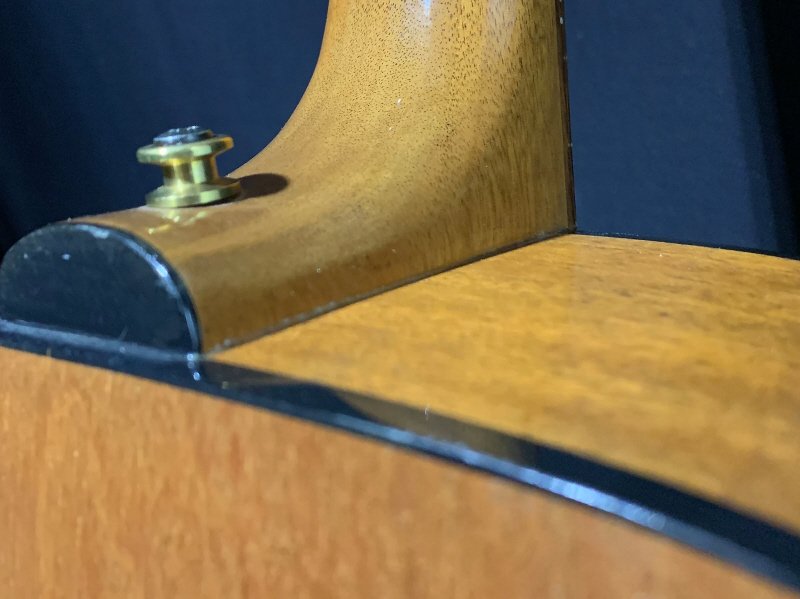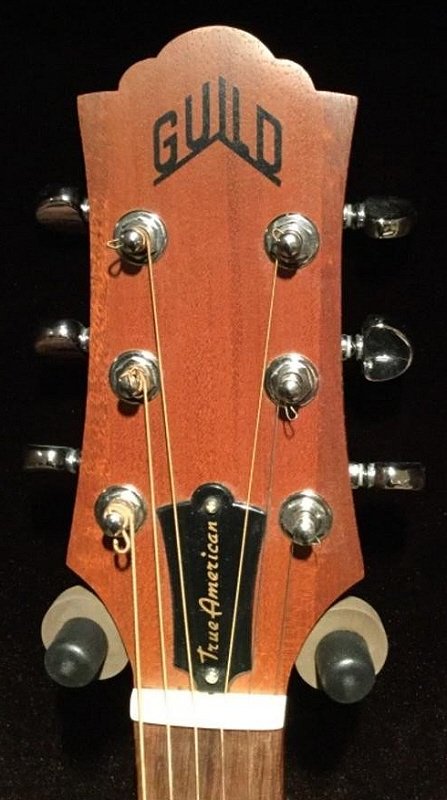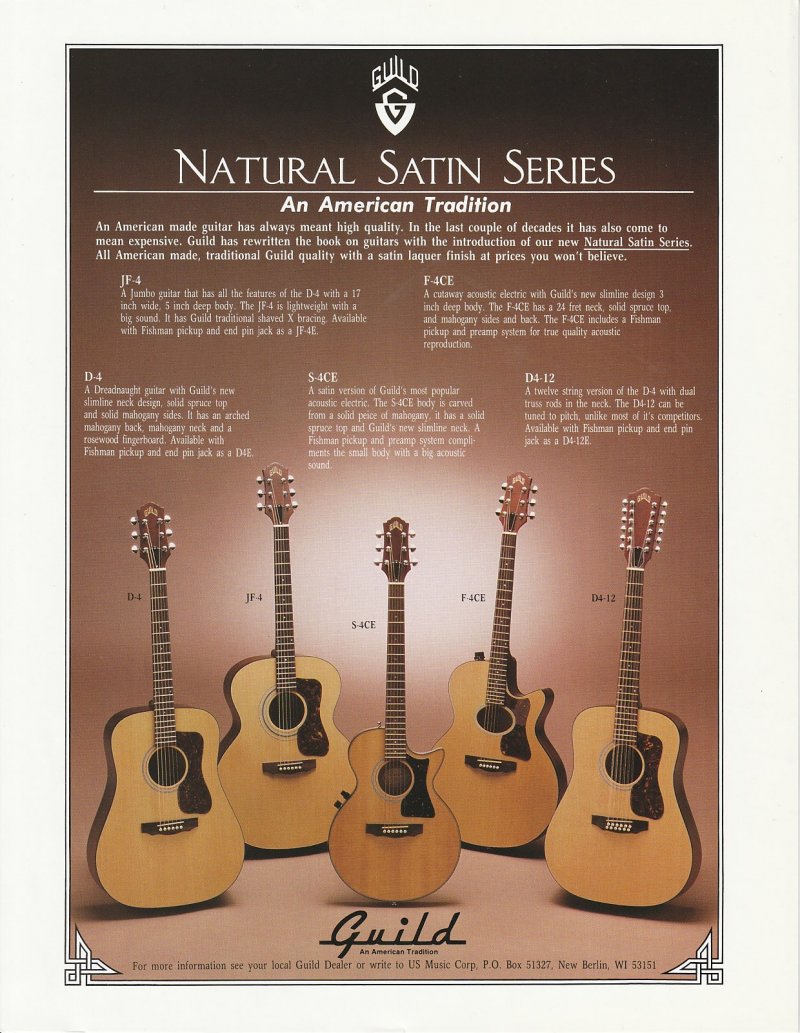Finally, a tuner change was made from Rotomatics to Ping sometime in 1996.
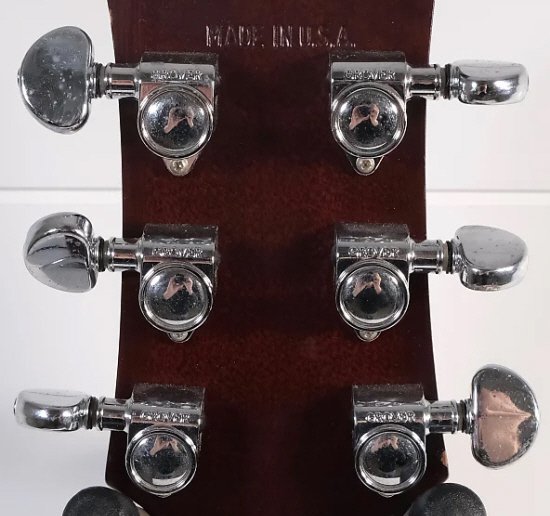
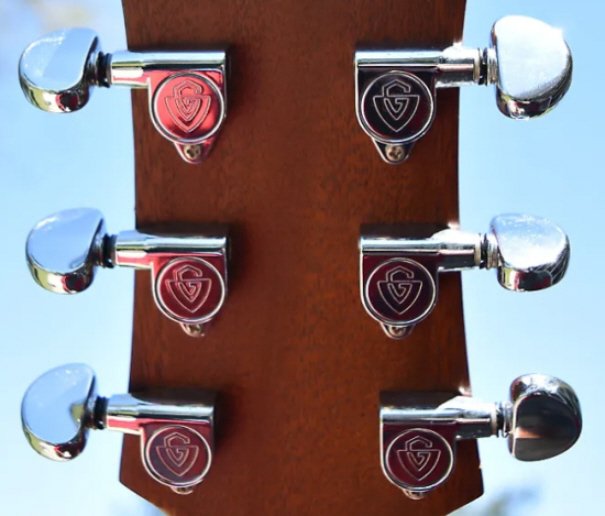
Another thing I noticed is the pickguard shape. Most use the slightly larger “straight” cut guard while some were fitted with the older, original curvy (“droopy”) guard. I think the Westerly folks did it on purpose to confuse future researchers.
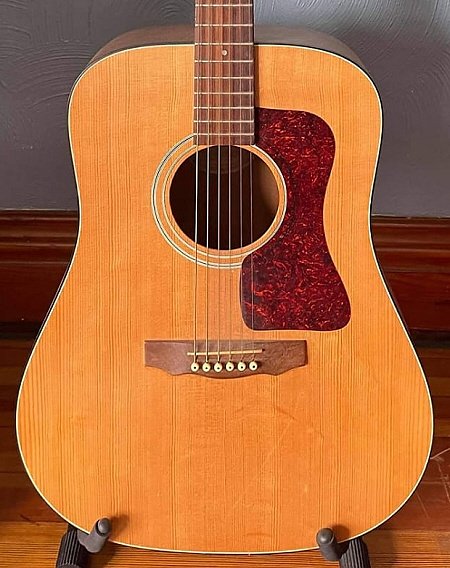
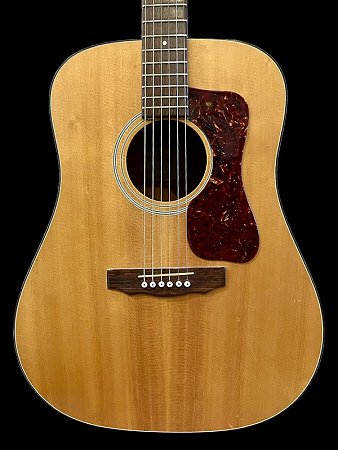
There were a few other variations of the model, too. Some D-4s were made with mahogany tops instead of spruce tops and some were offered in finishes other than natural.
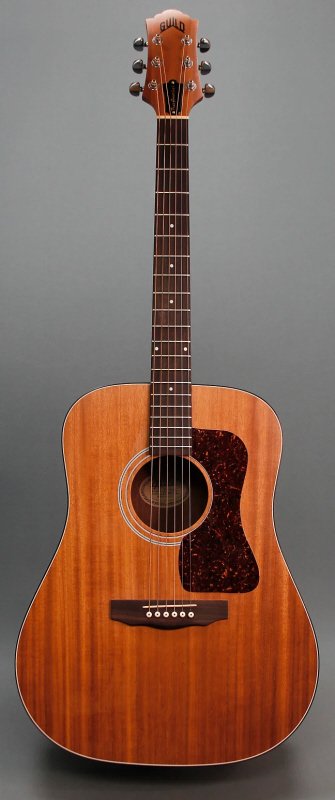
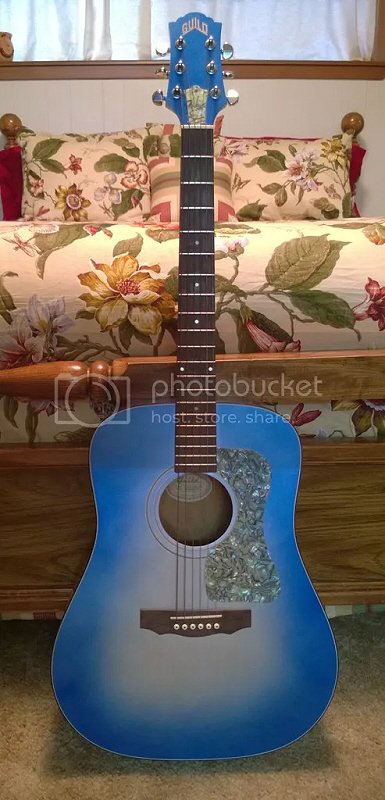
You can read more about mahogany and custom color D-4s here:
Blue-burst D-4? | Let's Talk Guild (letstalkguild.com)
Looking for info on D4 HR MAH | Let's Talk Guild (letstalkguild.com)
It looks like the D-4 was a popular model and it even won Acoustic Guitar Magazine’s 1998 Player’s Choice Award. Though it shared serialization with the D-25 for most of its life, the early production guitars from 1991-93 had their own serial number scheme. The serial numbers from the early time period suggest that approximately 7700 were made in the first 4 years of production. That’s a lot of D-4s!
1992 and 2000 Guild catalog excerpts (courtesy of
GAD.net)

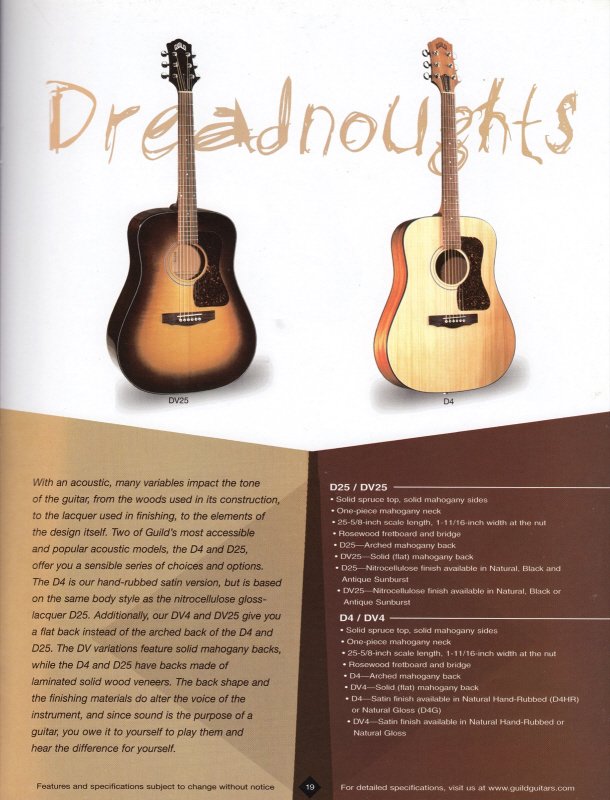
Also, I’d argue that the D-4 sort of lived on for a few more years from 2012-14 as the Mexican-made AD-3 of the Arcos series. If you look at the specs from the 2013 catalog, the D-4 and AD-3 are similar though not identical.
2013 Guild catalog excerpts (courtesy of
GAD.net)
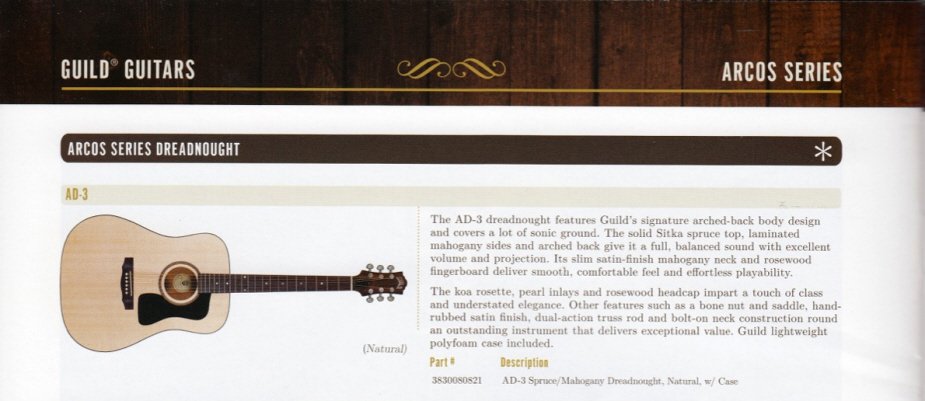
As previously noted, the D-4 is a pretty bare bones budget guitar. It has an “A” grade spruce top, but don’t let that fool you. The top on my guitar has over 50 grain lines per inch and is perfectly quarter sawn with a ton of silking. I think the grading is based solely on cosmetics, because aesthetically, it’s not as nice looking as the “AA” top on my DCE3.
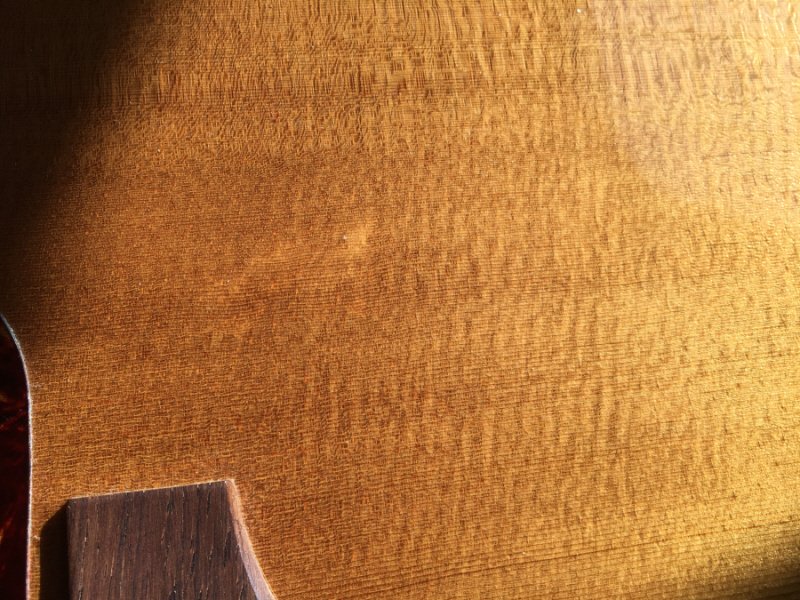
My guitar is representative of the fancier version with its bound back and gloss finish. It’s built well though the inside of the box is not pristine. I imagine the bottom-of-the-line guitars, being produced in greater numbers, did not get as much attention and were assembled more quickly. This is just a guess on my part. Fit and finish is good, and the water-based lacquer is sinking into the wood grain just like nitrocellulose does.
The FMIC specifications through the years list the fingerboard as rosewood, but “rosewood” in marketing speak can mean anything that is rosewood-like or uses rosewood in the name even if it’s not a true rosewood. I believe later D-4s (1997 and later) have pau ferro fingerboards and I’m prepared to be Ralf’d or Hans’d on that. Pau ferro, also known as Bolivian rosewood or morado, can sometimes look like rosewood so it’s hard to say for sure. I have guitars with pau ferro fingerboards and the one on my D-4 looks exactly like pau ferro.
The guitar was in need of some spa treatment and got a good clean up. The gloss finish was easy to clean and I like the way the guitar looks so much better than if it had the satin finish. The fingerboard was dry so it got oiled and I lowered the action a little bit. It had 80/20 bronze strings (12s) that were not quite dead, but I changed them out for phosphor bronze 12s. While the strings were off I snapped a photo of the bracing. As you can see, it’s straight-braced and there’s no tapering or scalloping to be found.
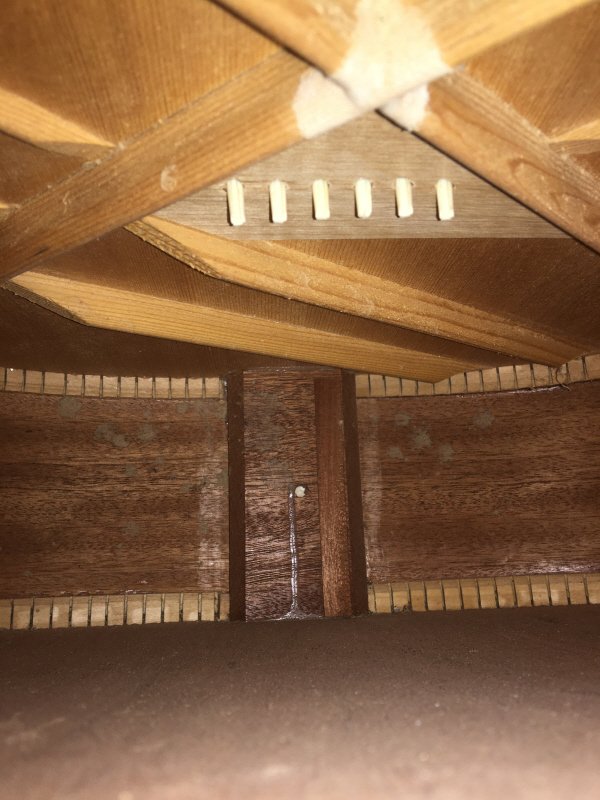
The neck profile is similar to my other Guilds from that time period. I’d call it a medium C profile. It has as 1 11/16” nut width which is fine, but I prefer slightly wider and chunkier necks, especially for acoustic guitars. Like my DCE3, the D-4 does not have a fret marker or side dot marker at the 3rd fret.
The guitar pretty much sounds like D-25s that I’ve played. The tone is woody and leans toward the bright end of the spectrum. To be sure, the bottom end is present, but not in a big way. The body is quite resonant and the guitar has excellent sustain. To my ears (i.e. – the player’s ears), it’s about as loud as your average mahogany dread. However, Mrs. Jaguar, who was sitting across the room, commented how well it projects the sound. Let’s give thanks to the arched back for that!
I think it sounds best with a flat pick as that really pulls out all the woody mahogany sound. This particular guitar isn’t bad for fingerstyle, but the string spacing makes it quite challenging (for me, at least).
I tried tuning it down a half-step like I did with the DCE3 to see if anything magical would happen, but alas, the D-4’s sweet spot is definitely in standard tuning. I’m not totally happy with the way the guitar sounds with PB strings, but I’m not sure if it’s the strings or just the nature of the guitar. Anyway, I may try a set of monel strings next. I don’t think going up to 13s will improve anything, so I’ll stick with 12s.
All in all, this D-4HG delivers everything Guild intended, but at a budget price point. For me, it’s the poster child for what a mahogany archback dreadnaught sounds like. It also reaffirmed that after 40 years, it is still not “my sound”. The reason may be because the “wonderful sound” (according to Mrs. Jaguar) is mainly being projected out in front of the guitar and I’m not hearing all the Guild goodness from the player’s position behind the guitar. It’s just a theory and the guitar was a gift so it is what it is.
And finally, I need to apologize that some of my NGD posts turn into monographs. I’m a gearhead so it comes naturally. Add the Christmas excitement on top of it all and well… you know. I’ll try to dial it back in future to the usual “I got a new guitar, here’s a photo”.


